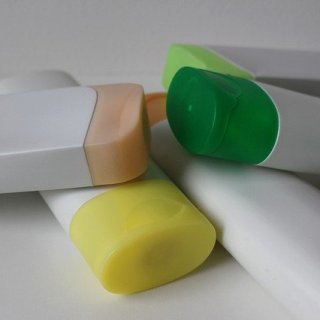 |
|
| > Welcome > Health Reporter > Health Reporter: 8 Top Tips to Sunlight Success #4
|
|
8 Top Tips to Sunlight Success #4Tip #4:Sunscreen will STOP manufacture of Vitamin D by your body. So, once your skin is the palest pink apply your very carefully selected sunscreen, which contains no carcinogenic or toxic chemicals. Stretch your Brain:Sunscreen creams, lotions and sprays are big business. These products can block out UVB rays (the ones which burn AND the ones which can be used for Vitamin D production), and also the UVA rays which penetrate more deeply into the skin causing deeper damage. When the product blocks out both UVB and UVA, it is said to be “Broad Spectrum”. Sadly, most sunscreens are not tested for danger to the skin, or the “cocktail” effect of the ingredients on the skin when exposed to sunlight. Do your research. 6 While we are constantly told that any kind of sunscreen is better than sun exposure, the data shows differently. How long have you, or someone you know been slapping on sunscreen? For instance, in the US, in spite of public health education to wear sunscreen since the 1980’s, there was a 77% increase in diagnosis of non-melanoma cancers between 1994 and 2014. For melanomas, in the past decade 2010-2020 diagnoses of melanoma have increased by 47%. 7 A newspaper article explaining the findings of a study, reported that 360 times more toxic chemicals than allowed by the Food and Drug Administration (FDA) leached into the bloodstream, raising risks for liver and kidney failure. 8 Ingredients from sunscreens have been found in breast milk, showing that the skin does indeed absorb ingredients in lotions or creams applied to the skin, and the common sunscreen ingredient Benzophenone 3 found in pregnant mother’s urine was found to have influenced the size of the baby’s head and the baby’s weight at birth. 9 There are safer sunscreens available, so read the references and choose wisely?10 6. Institute for Integrative Nutrition. (2019, May). How to choose a safe sunscreen that actually works. Retrieved from https://www.integrativenutrition.com/blog/2019/05/how-to-choose-a-safe-sunscreen-that-actually-works 7. Skin cancer facts & statistics. (n.d.). Retrieved from https://www.skincancer.org/skin-cancer-information/skin-cancer-facts/ 8. Kekatos, M. (2020, January 22). Sunscreens leach up to 360 times more toxic chemicals into the blood than the FDA allows, raising risks for liver and kidney failure, study finds. Daily Mail Australia. Retrieved from https://www.dailymail.co.uk/health/article-7911979/Sunscreen-chemicals-concentrations-blood-360-TIMES-higher-FDA-threshold.html 9. Ruszkiewicz, J.A. Pinkas, A. Ferrer, B., Peres, T.V. Tsatsakis, A. & Aschner, M. (2017, May). Neurotoxic effect of active ingredients in sunscreen products, a contemporary review. Toxicology Reports 2017; 4: 245–259 doi: 10.1016/j.toxrep.2017.05.006 10. EWG. (n.d.). Sunscreen Guide. Retrieved from https://www.ewg.org/sunscreen/
Posted: Tue 23 Mar 2021 |
|
|
